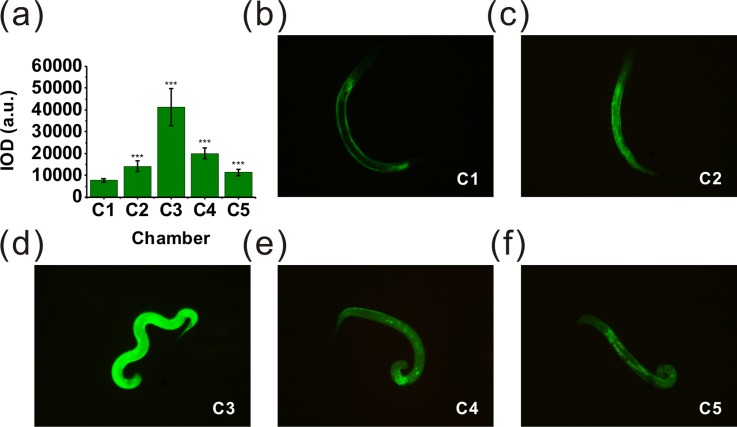FIG. 8.
The on-chip treatments of CL2166 nematodes. Photomicrographs (200× magnification) are from the worms in chamber 1–5 after exposure to MnCl2. The IOD was determined as described in the “Experimental” section (Sec. II). (a) Data were presented as mean IOD ± SD of the oxidative stress fluorescence of the strain CL2166 treated with MnCl2. (b) Photomicrograph of the worm treated with MnCl2 in chamber 1 (control group). (c)–(f) Photomicrographs of the worms treated with MnCl2 in chambers 2–5. All the photomicrographs showed MnCl2 can induce much stronger oxidative stress than the control group. The fluorescence intensity of the worms in chamber 3 is the maximum value. With the increasing concentration of MnCl2, the fluorescence intensity decreases which can be explained that Mn of high concentration can cause the apoptosis of the somatic cell of the worms. The asterisks indicate a statistically significant difference from the control group (***P < 0.001). 20–24 worms used in each assay, 24 h of exposure time and 3 independent assays under each condition.

